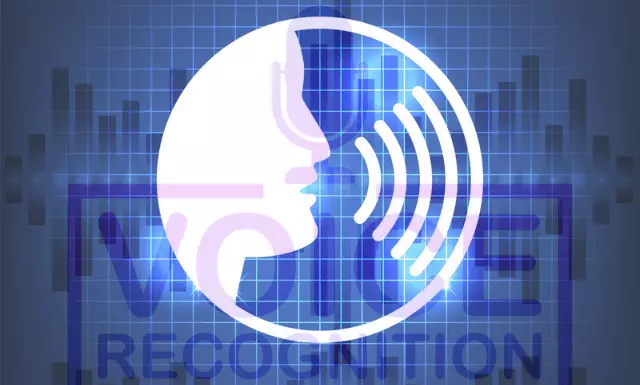Voice recognition is the process of decoding the human voice by the computer software program to receive and interpret dictation or to understand and carry out spoken commands.
Voice recognition has gained prominence and uses with the rise of AI. Voice recognition software is an application that makes use of speech recognition algorithms to identify the spoken languages and act accordingly.
The voice recognition process is important to virtual reality because it provides a fairly natural and intuitive way of controlling the simulation while allowing the user’s hands to remain free. It can also be helpful to the people who are physically disabled and for those who cannot work on the computer.
Voice recognition is commonly used to operate a device, perform commands, or write without having to use a keyboard, mouse, or press any buttons.
Voice recognition can be used to control smart homes, issue commands to phones and tablets, set reminders and interact hands-free with personal technologies. The most significant use is for the entry of text without having to use an on-screen or physical keyboard.
Also Read:
Types of voice recognition systems
Automatic speech recognition is one example of voice recognition. Below are other examples of voice recognition systems.
- Speaker dependent system – Voice recognition requires training before it can be used, which requires you to read a series of words and phrases.
- Speaker independent system – The voice recognition software recognizes most users’ voices with no training.
- Discrete speech recognition – The user must pause between each word so that the speech recognition can identify each separate word.
- Continuous speech recognition – Voice recognition can understand a normal rate of speaking.
- Natural language – The speech recognition not only can understand the voice but can also return answers to questions or other queries that are being asked.
How Does Voice Recognition Work
Voice recognition technology works by recording a voice sample of a person’s speech and digitizing it to create a unique voiceprint or template. Voice recognition software on computers requires that analog audio be converted into digital signals, known as analog-to-digital conversion.
Both speech and voice recognition work on the principle of translating ‘analog’ spoken words into ‘digital’ signals that a machine can understand. As simple as this may sound, it requires a lot of back-end processing, all the while compensating for differences in dialect, volume levels, tempo, and pronunciation.
For a computer to decipher a signal, it must have a digital database, or vocabulary, of words or syllables, as well as a speedy means for comparing this data to signals.
Basically Voice Recognition Working is divided into two components.
- Physiological component -The physiological component of a person’s voice is based on the shape of that person’s vocal tract, i.e. the shape of the larynx, nose, and mouth. Biometric technology uses the waveform of the voice sample to digitally recreate the shape of an individual’s vocal tract. No two individuals can have the same vocal tract and therefore every person will have a unique voice imprint.
- Behavioral component – This component represents the physical movement of the individual’s jaw, tongue, and larynx. Variation in this movement causes changes in the pace, manner, and pronunciation of a person’s voice, which include the person’s accent, tone, pitch, the pace of talking, etc.
The speech patterns are stored on the hard drive and loaded into memory when the program is run. A comparator checks these stored patterns against the output of the A/D converter — an action called pattern recognition.
A voice recognition program runs many times faster if the entire vocabulary can be loaded into RAM, as compared with searching the hard drive for some of the matches. Processing speed is critical, as well, because it affects how fast the computer can search the RAM for matches.
Voice Recognition Modalities
Speaker dependent – voice recognition relies on the knowledge of the candidate’s particular voice characteristics. This system learns those characteristics through voice training (or enrollment).
- The system needs to be trained on the users to accustom it to a particular accent and tone before employing to recognize what was said.
- It is a good option if there is only one user going to use the system.
Speaker independent – systems are able to recognize the speech from different users by restricting the contexts of the speech such as words and phrases. These systems are used for automated telephone interfaces.
- They do not require training the system on each individual user.
- They are a good choice to be used by different individuals where it is not required to recognize each candidate’s speech characteristics.
Challenges Faced When Integrating Voice Capabilities
Since voice integration is a relatively new technology, challenges are bound to appear.
1. Real-time response behavior
The real-time response depends on the network capabilities, network connection, and microphone of the device. When a user provides a voice command, the mobile app must interact with the server to convert the speech data into text. Once the text is converted and sent back to the device, it is action-executable.
The process of sending and receiving app behavior is called real-time response behavior. If the defined action is to search, the device sends another request to the server to fetch the results. In such cases, network latency can be the most challenging thing.
To overcome that, developers must ensure that the source code of the app is properly optimized. Moreover, they can move voice recognition and search functionalities to the server-side.
2. Languages and accents
Every software doesn’t support all languages and developers need to identify the regions of their target audience to make strategic decisions regarding languages or accents recognized.
Accents are a problem with language because it can be difficult to target and recognize each accent and the language associated with it. Google’s API supports different accents and is the best way to make your mobile app support tons of different accents.
3. Punctuation
This is one of the biggest challenges that is faced when it comes to voice-based software. Unfortunately, even the best improvements and algorithms may not work because there are virtually endless sentences with different sorts of punctuations.








